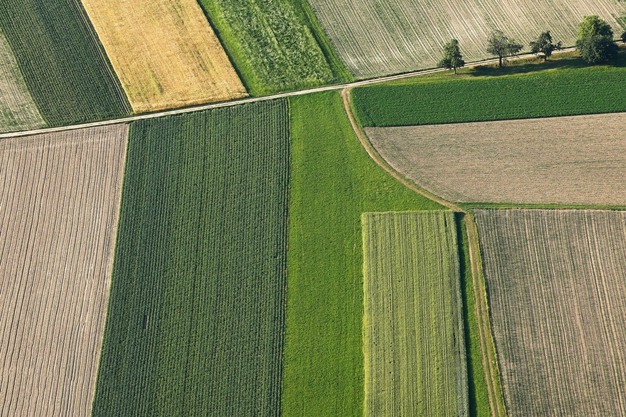No easy fix for environmental and socio-economic aspects of agriculture – Hortidaily

Analysis of EU Agricultural Policy Scenarios and their Impact on Sustainable Development Goals
A Joint Research Centre (JRC) analysis, the Scenar2040 study, provides a quantitative assessment of alternative policy orientations for the European Union’s Common Agricultural Policy (CAP). The study evaluates a reference scenario against three distinct pathways, examining their potential impacts on the agricultural landscape and their alignment with the Sustainable Development Goals (SDGs).
Contrasting Policy Scenarios and SDG Implications
The report presents two primary alternative scenarios, each with a different allocation of CAP funding, resulting in significant trade-offs across multiple SDGs.
Productivity and Investment Scenario
This scenario channels CAP support towards enhancing productivity and competitiveness. The projected outcomes reveal a complex relationship with various SDGs:
- SDG 2 (Zero Hunger) & SDG 8 (Economic Growth): A 2.7% increase in agricultural output is projected, leading to lower food prices and a stronger trade performance, improving the EU trade balance by €2.7 billion.
- SDG 12 (Responsible Consumption and Production): While resource efficiency is enhanced, environmental pressures intensify.
- SDG 13 (Climate Action) & SDG 15 (Life on Land): This approach is projected to increase agricultural greenhouse gas (GHG) emissions by 0.5% and raise the nitrogen surplus by 1.4% per hectare, posing challenges to climate and environmental goals.
Environment and Climate Scenario
This scenario shifts CAP support towards environmental and climate-focused interventions, demonstrating strong alignment with certain SDGs at the cost of others:
- SDG 13 (Climate Action) & SDG 15 (Life on Land): Significant environmental benefits are anticipated, including a 1.7% reduction in GHG emissions, a 2% decrease in nitrogen pollution per hectare, and an increase in crop diversity.
- SDG 8 (Decent Work and Economic Growth): The scenario projects the creation of 90,000 new jobs.
- SDG 2 (Zero Hunger): Economic consequences include a 4% decline in agricultural output and a rise in food prices. This could negatively impact food security and affordability, while an increase in imports would worsen the EU trade balance by €1.8 billion.
Key Trade-Offs and Global SDG Considerations
Intensification vs. Extensification
The report highlights the structural trade-offs between agricultural strategies and their impact on sustainability targets.
- Productivity-focused intensification enhances resource efficiency and economic performance but can increase localized environmental pressures, affecting progress on SDG 13 and SDG 15.
- Environmentally-focused extensification lowers per-hectare environmental pressures but can reduce overall production efficiency, potentially hindering objectives related to SDG 2.
Domestic vs. Global Climate Action (SDG 13)
The analysis reveals a critical complexity in achieving global climate goals. The environmentally-focused scenario, while reducing EU emissions, could lead to “emission leakage” by shifting production to regions with less carbon-efficient farming, potentially increasing total global emissions. Conversely, the productivity-focused scenario, despite slightly increasing EU emissions, could lower global emissions by displacing less sustainable international competitors.
The Hypothetical “NoCAP” Scenario: A Benchmark for Sustainable Development
To underscore the CAP’s role, the study simulates a scenario where the policy is entirely removed. The findings indicate severe negative consequences across multiple SDGs.
Socio-Economic Impacts
- SDG 8 (Decent Work and Economic Growth): Farm income would decline by an estimated 11%, with a loss of approximately 250,000 jobs in the agri-food sector.
- SDG 10 (Reduced Inequalities): Smaller and more vulnerable farms would face disproportionate income losses of up to 21%. Rising consumer food prices would heavily impact the most vulnerable households.
- SDG 2 (Zero Hunger): A 5% drop in overall EU food production would diminish the EU’s capacity to meet both domestic and global food demand.
Environmental Consequences
- SDG 13 (Climate Action): The analysis highlights a significant risk of a net increase in global agricultural GHG emissions due to production shifting to less carbon-efficient regions outside the EU.
These results underscore the CAP’s function as a stabilizing force, supporting economic resilience, social cohesion, and environmental balance, which are central tenets of the SDGs.
Conclusion: A Call for a Balanced Policy Approach
The Scenar2040 study does not endorse a single policy trajectory. Instead, it illustrates that there is no simple solution for achieving all sustainability objectives simultaneously. The findings call for a nuanced and balanced policy design that can navigate the complex trade-offs between economic viability (SDG 8), food security (SDG 2), and environmental protection (SDG 13, SDG 15) at both EU and global levels. A sophisticated understanding of these competing demands is essential to building a resilient and sustainable future for European agriculture in line with the Sustainable Development Goals.
Analysis of Sustainable Development Goals in the Article
1. Which SDGs are addressed or connected to the issues highlighted in the article?
-
SDG 2: Zero Hunger
The article directly addresses food production, security, and prices. It analyzes how different Common Agricultural Policy (CAP) scenarios would affect EU agricultural output, with the ‘Productivity and Investment’ scenario increasing it by 2.7% and the ‘Environment and Climate’ and ‘NoCAP’ scenarios decreasing it by 4% and 5% respectively. This directly relates to the goal of ensuring food security and sustainable agriculture.
-
SDG 8: Decent Work and Economic Growth
The economic viability of the agricultural sector and employment are key themes. The article discusses farm income, which would decline by 11-21% in a ‘NoCAP’ scenario. It also quantifies employment impacts, noting the ‘Environment and Climate’ scenario could create 90,000 jobs, while the ‘NoCAP’ scenario would lead to a loss of approximately 250,000 jobs. The EU’s trade balance, an indicator of economic performance, is also analyzed.
-
SDG 12: Responsible Consumption and Production
The article explores the trade-offs between different production models. The ‘Productivity-focused strategies’ aim to enhance resource efficiency, while the ‘Environment and Climate’ scenario focuses on reducing environmental pressures like nitrogen pollution. This analysis of sustainable production patterns is central to SDG 12.
-
SDG 13: Climate Action
Climate change is a primary focus. The article explicitly measures the impact of policy choices on agricultural greenhouse gas (GHG) emissions. The ‘Environment and Climate’ scenario would cut GHG emissions by 1.7%, while the ‘Productivity and Investment’ scenario could increase them by 0.5%. The concept of ’emission leakage’ is also discussed, highlighting the global dimension of climate action.
-
SDG 15: Life on Land
The article touches upon the protection of terrestrial ecosystems. The ‘Environment and Climate’ scenario is shown to have environmental benefits such as ‘boosting crop diversity’ and reducing ‘nitrogen pollution by 2% per hectare,’ which are crucial for maintaining biodiversity and ecosystem health.
2. What specific targets under those SDGs can be identified based on the article’s content?
-
Target 2.1: End hunger and ensure access to food
The article’s discussion of rising food prices under the ‘Environment and Climate’ and ‘NoCAP’ scenarios, which would disproportionally hit vulnerable households, directly relates to ensuring access to affordable food for all.
-
Target 2.4: Ensure sustainable food production systems and implement resilient agricultural practices
The entire study is an analysis of how to achieve this target. It models different CAP pathways to balance productivity with environmental sustainability, examining impacts like nitrogen surplus, GHG emissions, and crop diversity to define resilient and sustainable agricultural systems.
-
Target 8.2: Achieve higher levels of economic productivity through diversification, technological upgrading and innovation
The ‘Productivity and Investment’ scenario directly aligns with this target by channeling CAP support ‘towards interventions that improve productivity and competitiveness,’ resulting in increased agricultural output and enhanced resource efficiency.
-
Target 8.5: By 2030, achieve full and productive employment and decent work for all
The article connects agricultural policy directly to employment outcomes. It quantifies job creation (+90,000) under the ‘Environment and Climate’ scenario and job losses (-250,000) under the ‘NoCAP’ scenario, addressing the goal of maintaining employment in the agri-food sector.
-
Target 13.2: Integrate climate change measures into national policies, strategies and planning
The analysis presented in the article is a clear example of integrating climate change considerations into a major policy framework (the EU CAP). The ‘Environment and Climate’ scenario is a model of a policy pathway that prioritizes climate action by shifting support to interventions that cut GHG emissions.
-
Target 15.1: By 2020, ensure the conservation, restoration and sustainable use of terrestrial and inland freshwater ecosystems
The article relates to this target through the ‘Environment and Climate’ scenario, which would result in ‘boosting crop diversity’ and ‘cutting… nitrogen pollution by 2% per hectare.’ These outcomes contribute to the health and sustainability of terrestrial ecosystems.
3. Are there any indicators mentioned or implied in the article that can be used to measure progress towards the identified targets?
-
Agricultural Output
The article uses the percentage change in EU agricultural output as a key metric to assess the scenarios (e.g., +2.7% in the ‘Productivity’ scenario, -4% in the ‘Environment’ scenario). This is a direct indicator for food production and security (SDG 2).
-
Greenhouse Gas (GHG) Emissions
Changes in agricultural GHG emissions are explicitly quantified (e.g., -1.7% or +0.5%). This serves as a direct indicator for measuring progress on climate action (SDG 13).
-
Nitrogen Surplus/Pollution
The article measures the percentage change in ‘nitrogen surplus per hectare’ (e.g., +1.4% or -2%). This is a specific indicator for environmental pressure and the sustainability of agricultural practices (SDG 12, SDG 15).
-
Employment in the Agri-food Sector
The number of jobs created or lost is stated (e.g., +90,000 or -250,000). This is a clear indicator for measuring the socio-economic impact of policies and progress towards decent work (SDG 8).
-
Farm Income
The percentage decline in farm income (e.g., -11% to -21%) is used to assess the economic resilience of farms, particularly small and vulnerable ones. This is an indicator of economic viability (SDG 8).
-
Food Prices
The article mentions that food prices would be ‘lower’ or would ‘rise’ depending on the scenario. This is a qualitative indicator for food affordability and access (SDG 2).
-
Trade Balance
The impact on the EU trade balance is quantified in currency (e.g., improving by EUR 2.7 billion). This is an indicator of the sector’s economic competitiveness and performance (SDG 8).
-
Crop Diversity
The article mentions ‘boosting crop diversity’ as a positive outcome of the ‘Environment and Climate’ scenario. This is a qualitative indicator for agricultural biodiversity and ecosystem resilience (SDG 2, SDG 15).
4. Summary Table of SDGs, Targets, and Indicators
| SDGs | Targets | Indicators Identified in the Article |
|---|---|---|
| SDG 2: Zero Hunger |
|
|
| SDG 8: Decent Work and Economic Growth |
|
|
| SDG 12: Responsible Consumption and Production |
|
|
| SDG 13: Climate Action |
|
|
| SDG 15: Life on Land |
|
|
Source: hortidaily.com
What is Your Reaction?
 Like
0
Like
0
 Dislike
0
Dislike
0
 Love
0
Love
0
 Funny
0
Funny
0
 Angry
0
Angry
0
 Sad
0
Sad
0
 Wow
0
Wow
0
















































:focal(1500,1000)/https://media.globalcitizen.org/a6/9a/a69a4720-d8a1-4715-b596-18738d03c05c/rotary_polio_hero_image.jpg?#)







/countries/sri-lanka/photo-credit---dmc-sri-lanka.tmb-1200v.jpg?sfvrsn=dc298bcc_1#)

















